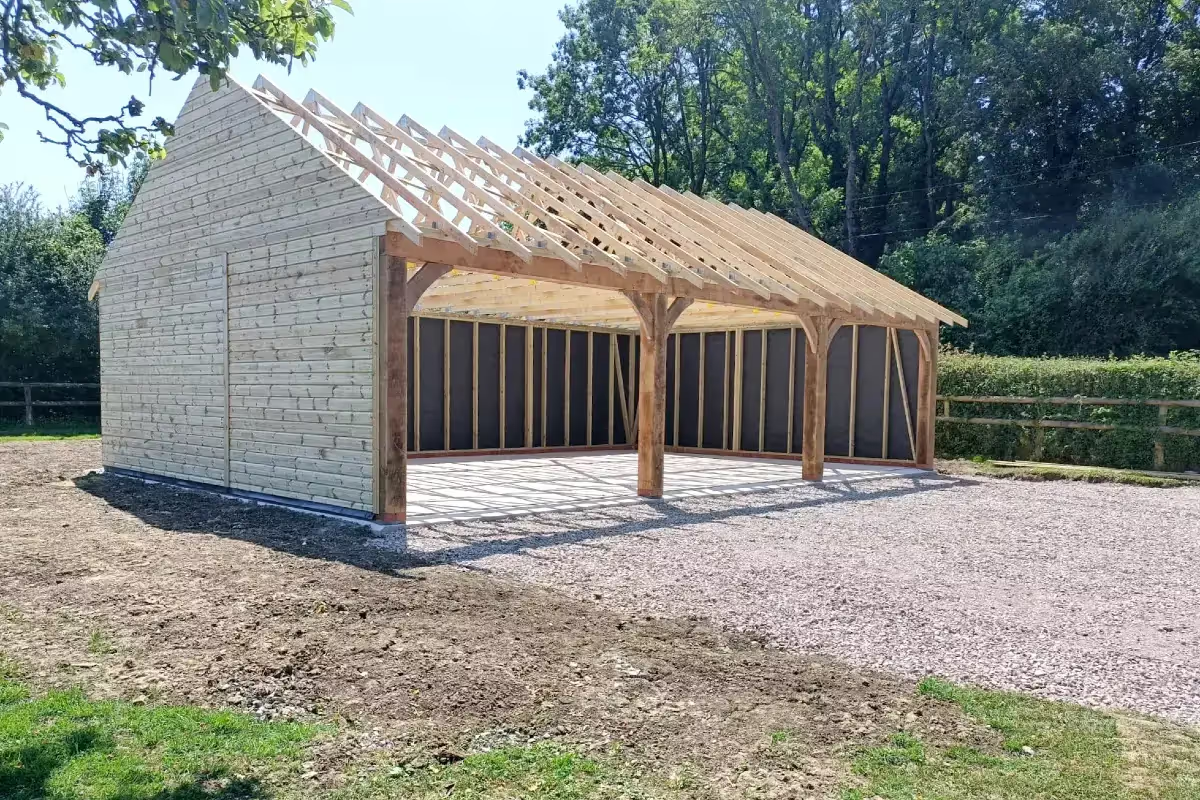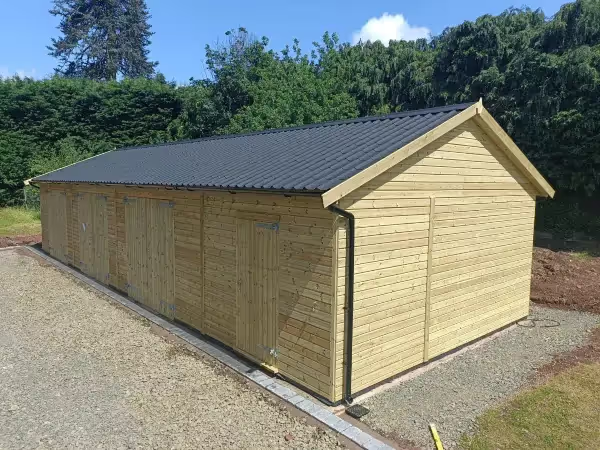
Wooden garages are very popular in the UK: in some cases they do not require planning permission*, they are easy and quick to erect, they suit any property thanks to their timeless look, and they can-be cost-effective. However, it is crucial you choose a garage made of high quality materials and that is well-designed, so it can last for a long time. If you save a little money on the building, you may need to replace it within 10 years. A sturdy wooden garage can last a lot longer than that.
In this article, we look at what type of wood a durable wooden garage should be built out of. Both the type of timber used and the design of the outbuilding itself affect its longevity.
Timber is wood prepared and cut into beams and planks for using in buildings. The size and type of timber used for construction is essential; the thicker the wood, the stronger it is. Structural timber planks should be thick and long to provide enough support to the building. Chart Garages timber frames are all either 75mm x 50mm (3' x 2') or 100mm x 50mm (4' x 2'). The timber we work with is thicker than that used by many of our competitors because we believe in delivering high quality, sturdy buildings which will stand the test of time.
Our roof purlin systems are made out of pressure-treated 125mm x 50mm (5' x 2') timber, for larger buildings we also use British Standard engineered roof trusses for strength. Where we use oak it is sustainably-sourced oak, the internal timber framing external planks are and pressure-treated softwood. You can learn more about our oak framing system on oak garages here.

Most wood types used in building construction decay within eight years outdoors. Untreated wood can be affected by fungal decay, mould, water damage, and insect attacks. These weaken a building, which eventually loses its structural integrity.Pressure-treated wood, on the other hand, retains its strength even in moist environments for up to 25 years. This is why we choose only pressure-treated timber for our garages, carriage houses, workshops, and carports.
Treating wood involves drying it fully and forcing preservatives into it. The process takes less than an hour. The wood we use is pressure-treated in a specialised facility before it reaches our workshops.
The design of a wooden garage should not be overlooked either, as it adds structural integrity to the building. Wind braces are diagonal braces which tie the rafters of a roof together and prevent racking. They stiffen the structure against the wind - something rather important in the UK, where big storms are not uncommon.
To protect the building from the weather, it is best to use roof boarding, too, something that is standard across our range of timber buildings.

Finally, maintaining your wooden garage will help it last longer. As the wood we use is pressure-treated, there is not a lot to do, but it is essential to get it done routinely. Keep the building clean and remove any build-up of soil which forms on the exterior wood near the ground. Keep moisture at bay by airing the building out often. Check on the timber regularly and remove any mould as soon as it forms. Staining the wood every two to three years will reduce the work you’ll need to do.
One the best things you can do to help any timber building last longer is clear the gutters annually, allowing rain water to run away and down the gutters rather than overflowing and constantly spilling over the wooden sides of a timber building significantly helps reduce the chance of damage to the cladding of a garage or workshop.
A lasting wooden garage should be built out of pressure-treated thick timber and softwood. Oak, redwood, and cedar are great options for the timber, while pine can be used as softwood. To be fully protected from the wind and weather, the garage should also feature wind braces and, if possible, roof boarding. Finally, a good maintenance routine will help you prevent any mould issues over time.
* Always check if you are required to apply for planning consent with your local Council.


